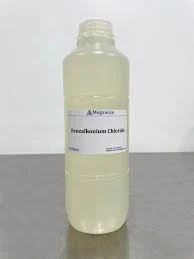flocculation in water purification
Flocculation in Water Purification
Flocculation in Water Purification
Flocculation is a process that involves the aggregation of fine particles into a larger cluster, known as flocs. This is typically achieved by adding flocculating agents, which are chemicals that help promote the coalescence of these tiny particles. Common flocculants include aluminum sulfate, polyacrylamide, and ferric chloride. When these substances are introduced into the water, they neutralize the electrical charges on the particles, allowing them to clump together and form larger aggregates.
flocculation in water purification

The flocculation process usually follows coagulation, where coagulants are added to destabilize the particles. Once coagulation occurs, the flocculation step allows for the formation of larger particles that can be easily removed from the water. After flocculation, the water undergoes sedimentation, where the heavier flocs settle at the bottom of the treatment tank, and the clearer water can be decanted off the top.
Flocculation is essential for achieving high water quality standards. By effectively removing turbidity, pathogens, and organic materials, this process significantly reduces the risk of waterborne diseases and enhances the overall safety of drinking water. Moreover, flocculation contributes to meeting environmental regulations by ensuring that discharged water from treatment plants is clean and compliant.
In conclusion, flocculation is a fundamental step in water purification that enhances the efficiency of the treatment process. By facilitating the removal of suspended solids and contaminants, it plays an indispensable role in providing safe drinking water for communities. As global water scarcity and pollution issues continue to escalate, the importance of effective water treatment processes like flocculation will only grow. Ensuring that these methods are properly implemented and optimized is crucial for maintaining public health and protecting our precious water resources.
-
Understanding Polycarboxylic Acids: Properties, Applications, and Future PotentialNewsJul.28,2025
-
Scale Inhibitor Explained: How to Protect Your System from Limescale and Hard Water DamageNewsJul.28,2025
-
Scale and Corrosion Inhibitors: Essential Chemicals for Industrial Water System ProtectionNewsJul.28,2025
-
Polyaspartic Acid: A Biodegradable Polymer for Sustainable ChemistryNewsJul.28,2025
-
Isothiazolinones: A Versatile Antimicrobial Class with Industrial Power and Regulatory ChallengesNewsJul.28,2025
-
A Deep Dive into 2-Phosphonobutane-1,2,4-Tricarboxylic Acid (PBTC)NewsJul.28,2025





